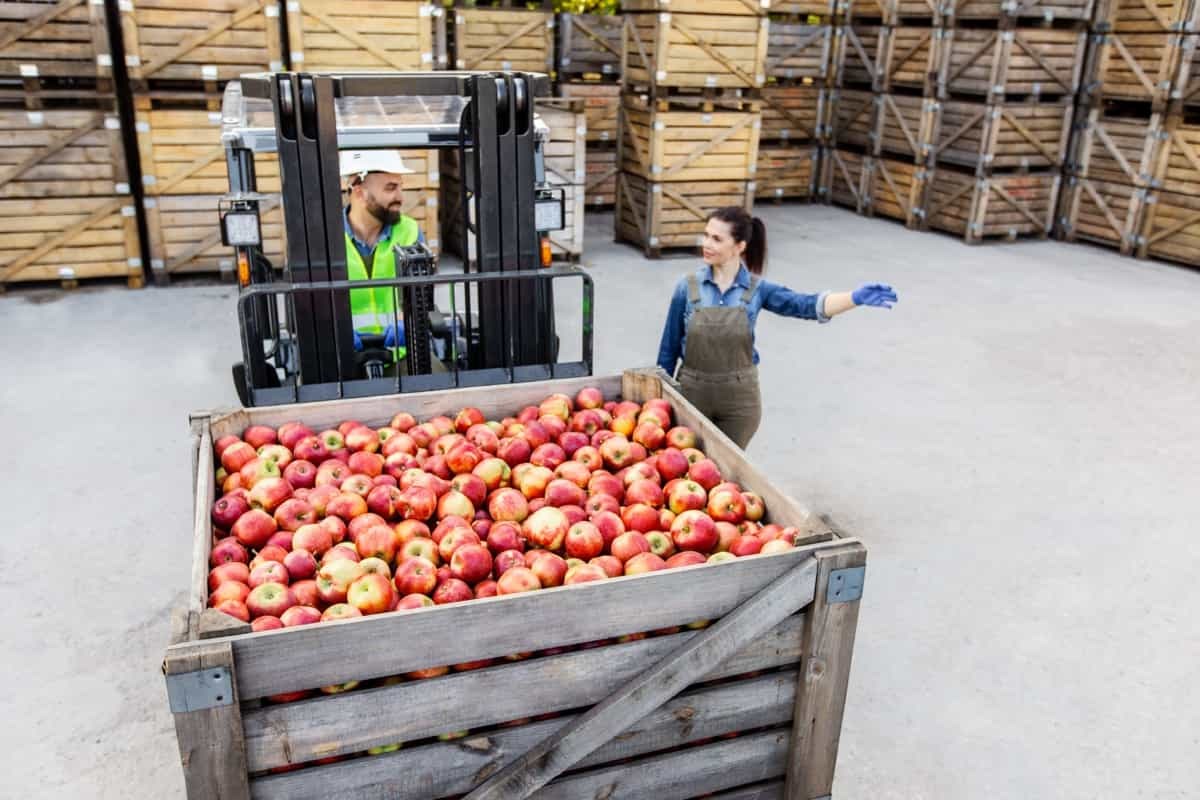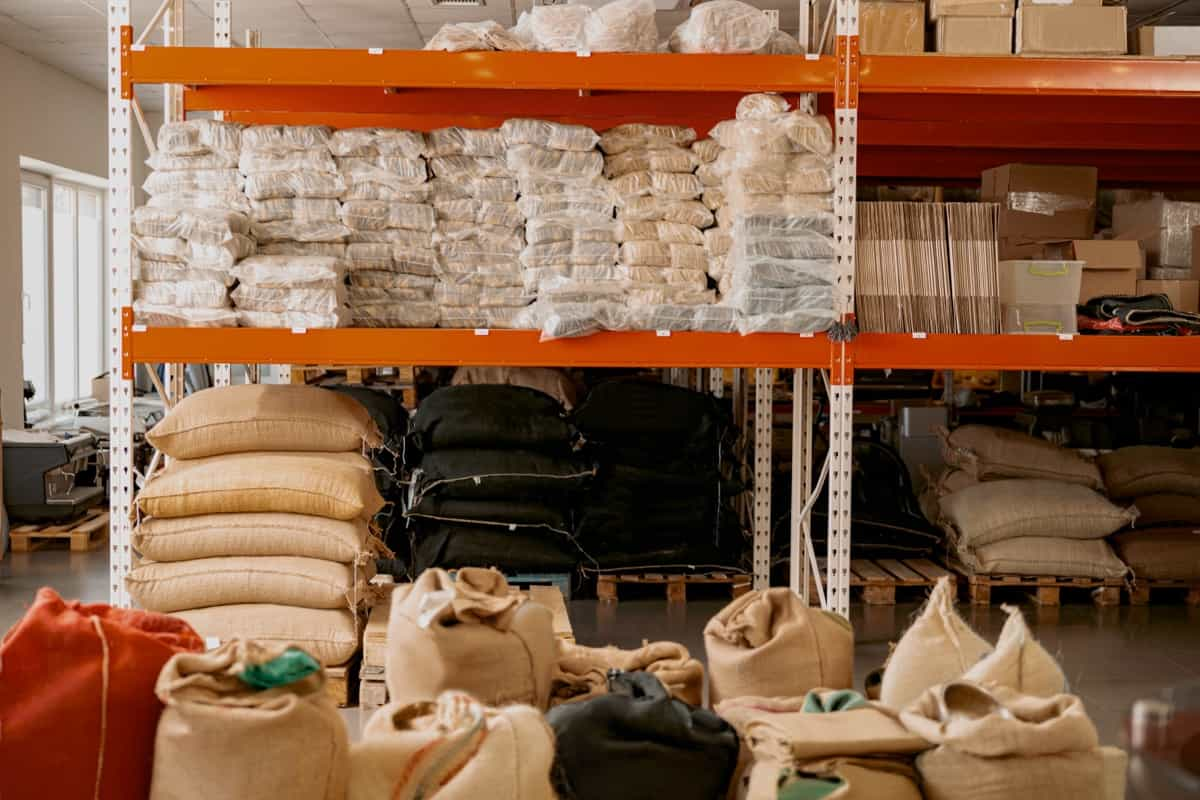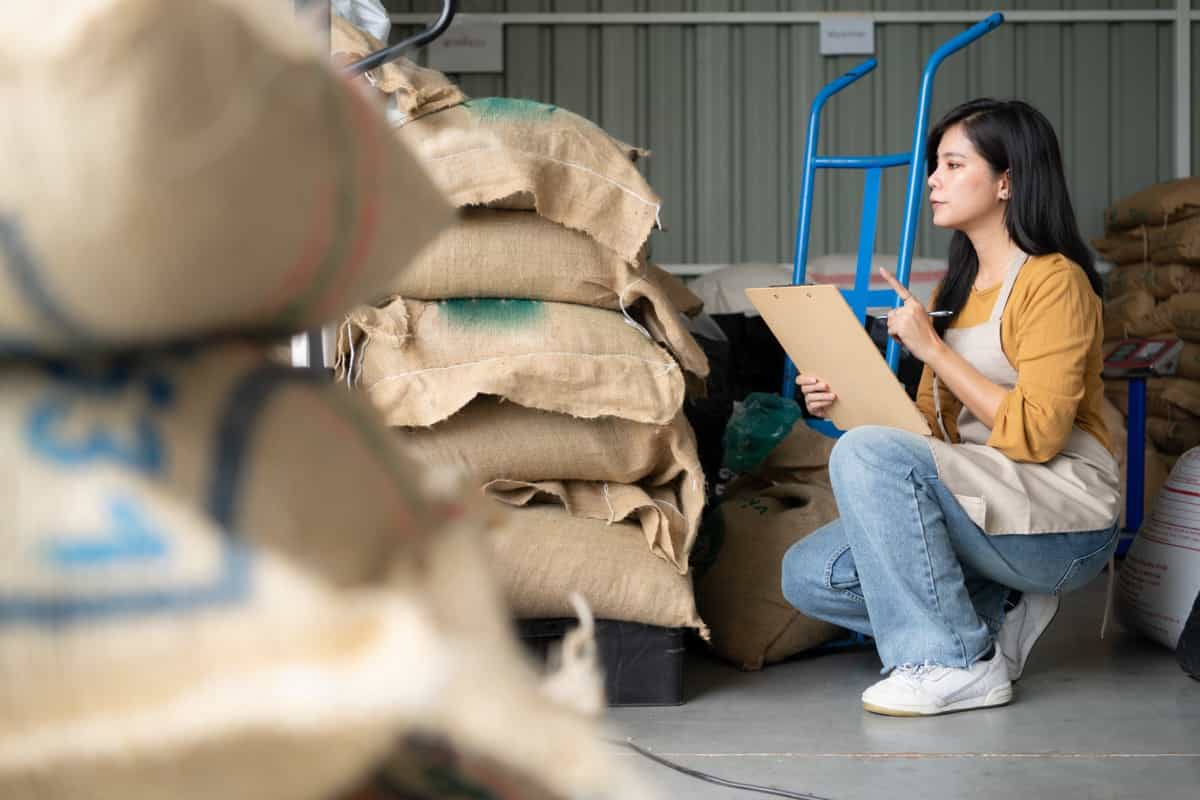Suppose you are a farmer or an entrepreneur who wants to set up a warehouse for agricultural produce. In that case, you may be eligible for a subsidy from the National Bank for Agriculture and Rural Development (NABARD). NABARD is a development bank that provides financial assistance and guidance for various rural development projects, including warehousing. In this blog post, we will explain the benefits, features, and eligibility criteria of the NABARD subsidy for a warehouse and how you can apply for it.

NABARD Subsidy for Warehouse
What Is the NABARD Subsidy For Warehouse?
The NABARD subsidy for warehouses is a scheme that provides financial assistance to farmers, cooperatives, federations, corporations, NGOs, and private entrepreneurs for setting up warehouses, cold storage, silos, and other storage facilities for agricultural produce. The subsidy is given as a back-ended capital investment subsidy, which means that the beneficiary has to repay the loan taken from a bank or a financial institution first and then claim the subsidy amount from NABARD.
What are the Objectives of the NABARD Subsidy For Warehouse?
- To create scientific storage capacity for agricultural commodities and reduce post-harvest losses.
- To promote grading, standardization, quality certification, and branding of agricultural produce.
- To facilitate market linkages and value addition of agricultural produce.
- To enhance the income and livelihood of farmers and rural entrepreneurs.
Scheme Highlights of NABARD Subsidy for Warehouse
- The scheme was launched in 2001-02 and is implemented by the National Bank for Agriculture, Rural Development.
- The scheme covers both public and private sector entities, including cooperatives, farmers’ producers’ organizations, corporates, individuals, etc.
- The scheme provides loans for projects involving the creation of storage infrastructure with a minimum aggregate capacity of 5000 metric tons for agricultural and allied produce.
- The scheme also covers the construction or modernization of marketing infrastructure facilities of Agricultural Produce Marketing Committees (APMCs).
- The scheme provides subsidies on the loan amount ranging from 15% to 33.33% depending on the category of borrower, the location of the project.
- The subsidy is released through NABARD after completion of the project and verification by the competent authority.
Objectives of the Warehouse Subsidy Scheme
- Create scientific storage capacity in rural areas.
- Reduce post-harvest losses and improve produce quality.
- Empower farmers to negotiate for better prices and their produce.
- Promote grading, standardization, branding, and quality certification.
- Facilitate pledge financing and marketing credit.
- Encourage private and cooperative sector participation in storage infrastructure development.
Benefits of the Scheme
- Provides safe and secure storage for farmers’ produce.
- Enables farmers to avoid distress sales and wait for better market conditions.
- Allows access to pledge financing and marketing credit.
- Helps farmers earn higher returns by selling in regulated markets or online platforms.
- Offers access to quality inputs and services.
- Improves farmers’ income and livelihood security.
Affiliated Banks for NABARD Subsidy for Warehouse
Affiliated banks under the Warehouse Subsidy Scheme include all scheduled commercial banks, cooperative banks, regional rural banks, state cooperative agriculture, rural development banks, and other institutions approved by NABARD. These banks provide loans to support the construction and renovation of warehouses, facilitating agricultural storage and reducing post-harvest losses.
In case you missed it: Government Subsidy for Oil Palm Crops in India: State-wise Oil Palm Cultivation Subsidies

Eligibility Criteria for NABARD Subsidy for Warehouse
- The borrower should be an eligible entity as per the scheme guidelines.
- The borrower should have a clear title or leasehold rights over the land on which the project is proposed to be set up.
- The borrower should have obtained all necessary approvals, clearances, licenses, etc., from the concerned authorities for setting up the project.
- The borrower should have a viable project proposal with technical feasibility and financial viability.
- The borrower should have a satisfactory credit history and repayment track record.
Important Facts
- The minimum loan amount of Rs. 10 lakh, and the maximum loan amount is Rs. 50 crore per project.
- The loan repayment period is up to 9 years, including a grace period of up to 2 years.
- The interest rate on the loan is as per the prevailing rate of the lending bank.
- The subsidy is back-ended and is released after completion of the project and verification by the competent authority.
- The subsidy is adjusted against the last few installments of the loan.
- The subsidy is subject to the availability of funds and adherence to the scheme guidelines.
Required Documents
- Application form in the prescribed format
- Project report with technical details, cost estimates, financial projections, etc.
- Proof of land ownership or lease agreement
- Copies of approvals, clearances, licenses, etc., from the concerned authorities
- Copies of audited financial statements in the last three years (if applicable)
- Copies of income tax returns for the last three years (if applicable)
- Copies of bank statements for the last six months
- Copies of identity proof and address proof
- Any other document as required by the lending bank
Application Procedure
The Warehouse Subsidy Scheme is a loan program where borrowers can avail of loans by submitting a project report and application form to affiliated banks. The bank will appraise the proposal and sanction the loan, disbursing the loan in installments based on the project’s progress.
In case you missed it: Government Subsidy for Oil Palm Crops in India: State-wise Oil Palm Cultivation Subsidies

The borrower must complete the project within the specified timeframe and submit a completion certificate. The bank will verify the project’s completion and submit a subsidy claim to NABARD. After due diligence and verification, NABARD will release the subsidy amount to the bank, and the bank will adjust the subsidy amount against the last few installments.
What are the Guidelines and Rules of the NABARD Subsidy for Warehouse?
- The project cost should include the cost of land (maximum 10% of the project cost), civil works, plant and machinery, electrical fittings, fire-fighting equipment, etc.
- The minimum storage capacity of the warehouse should be 100 MT for individual farmers and 250 MT for others.
- The maximum storage capacity of the warehouse should be at most 10,000 MT for individual farmers and 30,000 MT for others.
- The subsidy amount is 25% of the project cost for individual farmers and 15% of the project cost for others. The maximum subsidy amount is Rs. 3.75 crore for individual farmers and Rs. 6.75 crore for others.
- The beneficiary should contribute at least 10% of the project cost as margin money.
- The beneficiary should obtain a term loan from a bank or a financial institution for the remaining amount of the project cost.
- The beneficiary should complete the project within 18 months from the date of sanction of the term loan.
- The beneficiary should obtain a license or registration from the concerned authority for operating the warehouse.
- The beneficiary should maintain proper records and accounts of the warehouse operations and submit periodic reports to NABARD.
What are the Eligibility Criteria for the NABARD Subsidy for Warehouse?
- The beneficiary should be an Indian citizen or a registered entity in India.
- The beneficiary should have a clear title or leasehold rights over the land where the warehouse is proposed to be constructed.
- The beneficiary should have adequate experience or expertise in warehousing or related activities.
- The beneficiary should have a viable business plan and market potential for the warehouse project.
How Do I Apply for the NABARD Subsidy for a Warehouse?
- Prepare a detailed project report (DPR) covering all aspects of the warehouse project, such as location, design, capacity, cost, revenue, etc.
- Submit the DPR along with relevant documents, such as land records, quotations, licenses, etc., to a bank and financial institution of your choice.
- Obtain a sanction letter from the bank or the financial institution after the appraisal of your project.
- Start the construction work of your warehouse as per the approved plan and specifications.
- Complete your project within 18 months from the date of sanction of your term loan.
- Submit a completion certificate along with photographs and bills to your bank or financial institution.
- Claim your subsidy amount from NABARD through your bank or financial institution after verification of your project.
Benefits of NABARD Subsidy for Warehouse
- The subsidy can cover up to 25% of the capital cost of the warehouse, depending on the category of the borrower and the location of the project.
- The subsidy is given as a back-ended subsidy, which means that it is released after the completion of the project and after the bank loan is disbursed.
- The subsidy can reduce the interest burden and improve the viability of the warehouse project.
- The subsidy can also help in creating employment opportunities and enhancing rural infrastructure.
Features of NABARD Subsidy for Warehouse
- The subsidy is available for both new and existing warehouses that are used for storing agricultural produce, such as grains, pulses, oilseeds, spices, fruits, vegetables, etc.
- The subsidy is also available for cold storage, controlled atmosphere storage, ripening chambers, and other specialized storage facilities.
- The subsidy is applicable for warehouses with a minimum capacity of 100 MT and a maximum capacity of 30,000 MT.
- The subsidy is subject to certain technical and financial norms prescribed by NABARD, such as the design, construction, location, cost, etc., of the warehouse.
- The subsidy is linked with a bank loan from any commercial bank, cooperative bank, regional rural bank, or other financial institution approved by NABARD.
Maximizing Benefits: Tips for Successful NABARD Warehouse Subsidy Application
One of the most important steps to avail of the NABARD warehouse subsidy is to prepare a detailed project report (DPR) that outlines the technical, financial, and operational aspects of your proposed warehouse. The DPR should include information such as the location, size, capacity, design, construction cost, market potential, revenue projections, and environmental impact of your warehouse.
In case you missed it: Government Subsidy for Flower Crops in India: How to Avail up to 40-60% under MIDH Scheme

You should also ensure that your warehouse meets the quality standards and specifications prescribed by NABARD, such as the type of materials, ventilation, insulation, fire safety, pest control, etc. Additionally, you should consult with a NABARD-approved bank or financial institution that can sanction your loan and process your subsidy application.
State Wise NABARD Subsidy for Warehouse
The NABARD warehouse subsidy scheme is available across all states and union territories of India. However, the subsidy amount and the project cost may vary based on the location, category of your warehouse. For instance, the subsidy is higher for warehouses located in hilly areas, tribal areas, northeastern states, and islands.
Similarly, the subsidy is higher for warehouses that women entrepreneurs own, scheduled castes (SCs), scheduled tribes (STs), cooperatives, self-help groups (SHGs), farmer-producer organizations (FPOs), etc. You can check the state-wise subsidy rates and project costs on the official website of NABARD or contact your nearest NABARD office for more details.
| State | Category of Beneficiary | Subsidy Amount | Minimum Capacity |
| All States | State Governments, State/Central Government Owned/Assisted entities, Cooperatives, Federations of Cooperatives, Farmers’ Producers’ Organizations (FPOs), Federations of Farmers’ Collectives, SPVs set up under PPP mode, etc. | 25% of the project cost or Rs. 2.25 crore, whichever is lower | 5000 MT |
| All States | Primary Agricultural Credit Societies (PACS)/ Cooperative Marketing Societies (CMS) or similar institutions | 25% of the project cost or Rs. 2.25 crore, whichever is lower | 5000 MT |
| All States | Corporates/ Companies/ Individual Entrepreneurs etc. | 15% of the project cost or Rs. 1.35 crore, whichever is lower | 5000 MT |
| All States | Agricultural Produce Marketing Committees (APMCs) | 25% of the project cost or Rs. 2.25 crore, whichever is lower | No minimum capacity |
| All States | Women, Scheduled Caste (SC)/ Scheduled Tribe (ST) entrepreneurs or their cooperatives/ Self-help groups | 33% of the project cost or Rs. 3 crore, whichever is lower | 5000 MT |
Subsidy Basis Under Warehouse Subsidy Scheme
| Category of Borrower | Location of Project | Subsidy Rate |
| Government/ Government owned corporations/ Federations/ Cooperatives/ Federations of Cooperatives/ Farmers’ Producers’ Organizations (FPOs)/ Federations of Farmers’ Collectives/ SPVs set up under PPP mode | All over India | 33.33% |
| Corporates/ Companies/ Individual Entrepreneurs etc. | North Eastern States including Sikkim, Hilly States (Himachal Pradesh, Jammu & Kashmir, Uttarakhand), Left Wing Extremism (LWE) affected districts | 33.33% |
| Corporates/ Companies/ Individual Entrepreneurs etc. | Other than above | 25% |
| Primary Agricultural Credit Societies (PACS)/ Cooperative Marketing Societies (CMS) or similar institutions | All over India | 25% |
Exploring the Impact: NABARD’s Warehouse Subsidy on Agriculture and Storage Sector
The NABARD warehouse subsidy scheme has a significant impact on the agriculture and storage sector in India. By providing financial assistance for building warehouses and cold storage, the scheme helps reduce post-harvest losses, improve food security, enhance farmers’ income, and create employment opportunities.
In case you missed it: Government Subsidy for Urban Farming in India: How to Avail up to 75%

Moreover, the scheme also supports the development of rural infrastructure, market linkages, value addition, and agro-processing activities. According to NABARD’s annual report 2020-21, the bank has sanctioned 1,564 projects under the warehouse subsidy scheme with a total loan amount of Rs 4,557 crore and a total subsidy amount of Rs 1,139 crore.
Helpline Information
- Email: nabard@nabard.org
- Website: https://www.nabard.org/
- The borrowers can also contact their respective NABARD regional offices for any assistance or guidance.
Frequently Asked Questions on NABARD Subsidy for Warehouse
What is the NABARD Subsidy for Warehouse Construction?
The NABARD Subsidy for Warehouse Construction is a financial assistance program designed to support the development of warehousing infrastructure for agricultural produce, aimed at reducing post-harvest losses and improving farmers’ income through better storage facilities.
How Can Applicants Apply for the NABARD Warehouse Subsidy?
Applicants can apply for the NABARD Warehouse Subsidy by submitting an application through the official NABARD website or at regional NABARD offices, along with necessary documentation such as project reports, land documents, and financial statements.
Who is Eligible for the NABARD Warehouse Subsidy Scheme?
Farmers, agricultural cooperatives, private companies, and individuals involved in agriculture, as well as SHGs, NGOs, and other agricultural organizations, are eligible for the NABARD Warehouse Subsidy Scheme, provided they meet NABARD’s specified criteria.
What is the Subsidy Amount Offered by NABARD for Warehouses?
NABARD offers a subsidy amount ranging from 25% to 33.33% of the project cost for constructing warehouses, depending on the applicant’s category and project location, to enhance agricultural storage infrastructure.
What are the Criteria to Qualify for NABARD’s Warehouse Subsidy?
To qualify for NABARD’s Warehouse Subsidy, applicants must demonstrate project viability, own the necessary land, or have a long-term lease, and their project should align with NABARD’s goals of improving agricultural storage infrastructure.
Can NABARD’s Warehouse Subsidy be Available for Renovating Existing Warehouses?
Yes, NABARD’s Warehouse Subsidy can be availed for both constructing new warehouses and renovating existing ones, provided the renovation improves storage efficiency and capacity, in line with NABARD’s objectives.
What Documents are Required to Apply for a Nabard Warehouse Subsidy?
Applicants need to submit ID proofs, land ownership or lease documents, a detailed project report (DPR), financial records, and any other documents specified by NABARD for the Warehouse Subsidy application.
How Does NABARD Determine the Subsidy Amount for Warehouse Projects?
The subsidy amount for warehouse projects by NABARD is determined based on the project cost, applicant category, and adherence to NABARD’s guidelines, with the intention to support agricultural storage and reduce post-harvest losses.
What is the Process After Applying for the Nabard Warehouse Subsidy?
Once applying, NABARD reviews the application for completeness and eligibility, conducts a financial and technical appraisal, and then notifies successful applicants about the subsidy disbursement process.
Is There a Last Date for Applying to the Nabard Warehouse Subsidy?
The deadline for applying to the NABARD Warehouse Subsidy varies based on specific schemes and funding availability. Applicants are advised to check the NABARD website or contact regional offices for current deadlines.
Can the NABARD Warehouse Subsidy be Combined with Other Government Schemes?
Yes, the NABARD Warehouse Subsidy can often be combined with other government agricultural schemes, subject to the condition that the combined subsidy does not exceed the total project cost, as per NABARD guidelines.
What Maintenance Standards are Required for Nabard-subsidized Warehouses?
NABARD-subsidized warehouses must adhere to high maintenance standards, including regular inspections and upkeep, to ensure they continue to meet NABARD’s objectives for efficient agricultural storage and infrastructure development.
How Long Does it Take to Receive the Nabard Warehouse Subsidy After Application?
The timeframe to receive the NABARD Warehouse Subsidy varies, often taking several months, as it involves application review, appraisal, and processing, with specific timelines dependent on the project’s complexity and NABARD’s evaluation.
Are There Specific Design Standards for Warehouses to Qualify for Nabard’s Subsidy?
Warehouses must meet specific design and construction standards set by NABARD to qualify for its subsidy, focusing on efficiency, durability, and the ability to reduce post-harvest losses, with detailed guidelines available from NABARD.
In case you missed it: Government Subsidy for Vegetable Crops in India: How to Avail up to 40–60% under MIDH Scheme

What Happens if a Project Funded by NABARD’s Warehouse Subsidy Fails to Comply with Guidelines?
Projects that fail to comply with NABARD’s guidelines risk subsidy revocation or adjustments. NABARD requires adherence to project specifications and may conduct inspections to ensure compliance.
Can NABARD’s Warehouse Subsidy Cover the Purchase of Land for Warehouse Construction?
NABARD’s Warehouse Subsidy primarily covers construction or renovation costs and does not extend to land purchase. Applicants must already own the land or have lease arrangements in place to qualify for the subsidy.
What Role Does NABARD Play in Providing Technical Assistance for Warehouse Construction?
NABARD may offer technical assistance and guidelines for warehouse construction to ensure projects meet its standards for efficiency and sustainability, although the primary responsibility for design and construction lies with the applicant.
How are Disputes Regarding NABARD Warehouse Subsidy Applications Resolved?
Disputes regarding NABARD Warehouse Subsidy applications are resolved through a review process, where applicants can submit additional information or clarifications, with NABARD providing final decisions based on its policies and the project’s alignment with its objectives.
Is it Possible to Apply for NABARD’s Warehouse Subsidy for Cold Storage Facilities?
Yes, NABARD’s Warehouse Subsidy is available for cold storage facilities as well, provided they serve the purpose of agricultural produce storage and meet NABARD’s criteria for enhancing storage infrastructure and reducing post-harvest losses.
What are the Sustainability Criteria for Warehouses to Receive NABARD’s Subsidy?
NABARD encourages the use of sustainable building materials and energy-efficient designs in warehouses to qualify for its subsidy, aiming to promote environmental sustainability and long-term viability in agricultural storage solutions.
How Does NABARD Ensure the Effective Use of its Warehouse Subsidy?
NABARD ensures the effective use of its Warehouse Subsidy through stringent application review, project monitoring, and compliance checks, aiming to support projects that align with its mission to improve agricultural infrastructure and storage capacities.
Can Individuals Directly Apply for NABARD’s Warehouse Subsidy, or Is It Routed Through Banks?
Individuals can directly apply for NABARD’s Warehouse Subsidy, but the process may involve coordination with banks or financial institutions for project financing, as per NABARD’s operational guidelines and subsidy disbursement procedures.
What impact does NABARD’s Warehouse Subsidy have on Agricultural Logistics?
NABARD’s Warehouse Subsidy aims to significantly improve agricultural logistics by enhancing storage capacity and efficiency, reducing post-harvest losses, and facilitating better market access for farmers, contributing to the overall growth of the agricultural sector.
How does NABARD Monitor the Progress of Warehouse Projects Receiving Its Subsidy?
NABARD monitors the progress of warehouse projects receiving its subsidy through periodic reports, site inspections, and audits to ensure project milestones are met, and the funds are used as intended, aligning with its objectives for agricultural infrastructure development.
What Types of Storage Commodities are Covered Under NABARD’s Warehouse Subsidy?
NABARD’s Warehouse Subsidy covers a wide range of storage commodities, including grains, pulses, fruits, vegetables, and other agricultural produce, aiming to support diverse storage needs and improve market accessibility for farmers.
How Does NABARD’s Warehouse Subsidy Contribute to Farmer Income?
NABARD’s Warehouse Subsidy contributes to farmer income by reducing post-harvest losses through improved storage facilities, enabling farmers to store produce until market prices are favorable, thereby increasing potential earnings.
What is the Appeal Process for Denied NABARD Warehouse Subsidy Applications?
Denied NABARD Warehouse Subsidy applications can be appealed by submitting a detailed justification and any additional documentation for reconsideration, with NABARD reviewing the appeal based on its subsidy guidelines and project merits.
Can NABARD’s Warehouse Subsidy be Used for Technology Integration in Warehouses?
Yes, NABARD’s Warehouse Subsidy can be used for integrating technology in warehouses, such as inventory management systems and climate control, to enhance storage efficiency and quality, in line with NABARD’s objectives.
What Ongoing Support Does NABARD Offer for Subsidized Warehouse Projects?
NABARD offers ongoing support for subsidized warehouse projects through technical advice, monitoring, and potentially additional funding for expansion or upgrades, aiming to ensure long-term success and alignment with agricultural development goals.
How do NABARD’s Warehouse Subsidy Rerms Adapt to Changing Agricultural Needs?
NABARD periodically reviews and updates its Warehouse Subsidy terms to adapt to changing agricultural needs, incorporating feedback from stakeholders and aligning its support with emerging trends in agricultural storage and infrastructure requirements.
Conclusion
NABARD’s subsidy for warehouses offers vital support to rural farmers, cooperatives, and entrepreneurs, aiming to enhance agricultural storage infrastructure nationwide. Through clear guidelines and eligibility criteria, this scheme promotes food security, reduces post-harvest losses, and fosters economic empowerment in India’s agricultural sector.
- Economical Aquaculture: A Guide to Low-Budget Fish Farming
- 15 Common Planting Errors That Can Doom Your Fruit Trees
- How to Make Houseplants Bushy: Effective Tips and Ideas
- Innovative Strategies for Boosting Coconut Pollination and Yield
- Pollination Strategies for Maximum Pumpkin Yield
- The Complete Guide to Chicken Fattening: Strategies for Maximum Growth
- Natural Solutions for Tulip Problems: 100% Effective Remedies for Leaf and Bulb-Related Issues
- Revolutionizing Citrus Preservation: Towards a Healthier, Greener Future
- Natural Solutions for Peony Leaf and Flower Problems: 100% Effective Remedies
- Maximizing Profits with Avocado Contract Farming in India: A Comprehensive Guide
- Natural Solutions for Hydrangea Problems: 100% Effective Remedies for Leaf and Flowers
- The Ultimate Guide to Choosing the Perfect Foliage Friend: Bringing Life Indoors
- From Sunlight to Sustainability: 15 Ways to Use Solar Technology in Agriculture
- The Ultimate Guide to Dong Tao Chicken: Exploring from History to Raising
- The Eco-Friendly Makeover: How to Convert Your Unused Swimming Pool into a Fish Pond
- Mastering the Art of Delaware Chicken Farming: Essentials for Healthy Backyard Flocks
- 20 Best Homemade Fertilizers for Money Plant: DIY Recipes and Application Methods
- How to Craft a Comprehensive Free-Range Chicken Farming Business Plan
- Brighten Your Flock: Raising Easter Egger Chickens for Beauty and Bounty
- How to Optimize Your Poultry Egg Farm Business Plan with These Strategies
- Subsidy for Spirulina Cultivation: How Indian Government Schemes Encouraging Spirulina Farmers
- Ultimate Guide to Raising Dominique Chickens: Breeding, Feeding, Egg-Production, and Care
- Mastering the Art of Raising Jersey Giant Chickens: Care, Feeding, and More
- Ultimate Guide to Raising Legbar Chickens: Breeding, Farming Practices, Diet, Egg-Production
- How to Raise Welsummer Chickens: A Comprehensive Guide for Beginners
- How to Protect Indoor Plants in Winter: A Comprehensive Guide
- Ultimate Guide to Grow Bag Gardening: Tips, Tricks, and Planting Ideas for Urban Gardeners
- Guide to Lotus Cultivation: How to Propagate, Plant, Grow, Care, Cost, and Profit
- Agriculture Drone Subsidy Scheme: Government Kisan Subsidy, License, and How to Apply Online
- Ultimate Guide to Raising Araucana Chickens: Breed Profile, Farming Economics, Diet, and Care
- Bringing Hydroponics to Classroom: Importance, Benefits of Learning for School Students
- Ultimate Guide to Raising Polish Chickens: Breed Profile, Farming Economics, Diet, and Care
- Ultimate Guide to Raising Australorp Chickens: Profile, Farming Economics, Egg Production, Diet, and Care
- Silkie Chicken Farming: Raising Practices, Varieties, Egg Production, Diet, and Care
- Sussex Chicken Farming: Raising Practices, Varieties, Egg Production, Diet and Care
- Homemade Feed Formulations for Livestock: Discover Cost-effective Starter to Finisher Feed Recipes
I am interested in warehouse
Is there any last date of Gramin Bhandaran Scheme endoring by NABARD?
Rural godown scheme effective date and the period during which it is in force.
I wants to know about subsity in present time
I own a 15 acre agriculture land and I am willing to give it on lease for warehouse and godown purpose to both private and government sectors.
Anyone one interested please send a email. Thank you
Please send me the PPT on Gramin Bhandaran Yojana for Warehouse construction and subsidy.
Can you send detailed guideline for Rural Godown Scheme 2020.
I own 90′ x 150 ‘ land at Jaipur Kota main highway. Interested to construct Godown.
i have 3 acers road touch land, and want to give it on lease for governments,nabard godowns schemes, for contact plz e mail
Location & price
If anyone interested in warehouse, godown, cold storage?
I m intrested, please guide me
Can NRI’s also get the subsidy if we decide to build a warehouse that meets the criteria? Are NRIs eligible for subsidy?
Sir pls provide gaidlines for werehouse in rural area pls
Sir I want subsidy for warehouse period of 2021 and 2022 in present time
Reply
Hello sir,
I am farmer and want to go for Gramin Bhandaran Scheme. Kindly arrange to send me the latest guidelines and duration of the schemes and time limit or and dead line for the submission of proposal……….
Hello sir
I’m Sachin singh from m.p
I want subsidy to warehouse period of 2021-22
I m intrested
Hello sir, I am Venkata peram having 62cents road facing agricultural land and planning for godown. Please share NABARD schemes and process details as well.
I am interested please provide to me the cost of construction, per metric ton how much land is required. How can get a profit? So please help.
Gramin ware house yojana,send me complete details, project report, subsidy, financial ,etc. Thanks.
Pl . Send the drawing of 100 tone capacity Godwon.
As I m interested in this plan having 10 acres of land in Punjab..close to city.plz suggest.. thanks..
I want to start NABARD WAREHOUSE BUSINESS , So, plz provide me the PPT details